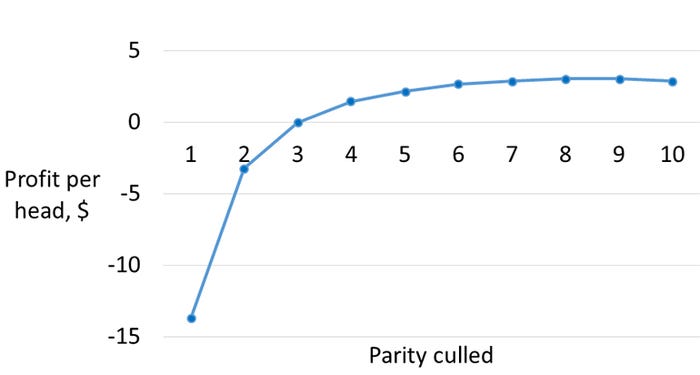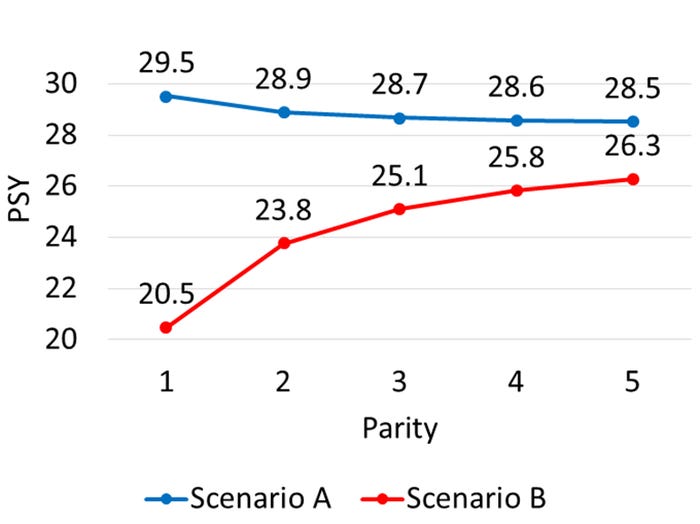What’s in a definition? Appropriately calculating PSY
To focus on profitability, your calculation of pigs per sow per year needs to include gilt development days.
December 14, 2017

By Mark Knauer and Jeff Wiegert, North Carolina State University
Changing how pigs per sow per year is calculated may help your farm focus on a more profitable goal. The trait PSY is made up of two component traits: litters per sow per year and pigs per litter. By simply accounting for gilt development days in the LSY part of the equation, you can increase the correlation between PSY and profit.
Why is this? Because gilt development days (the days between when a gilt can be sold as a market hog and when she is bred) cost money. By accounting for gilt development days in the PSY equation you spread those costly nonproductive days across the female’s reproductive output. Therefore, including gilt development days when calculating PSY is the most accurate representation of a sow farm’s true costs.
Let’s work through an example. For Scenario A, let’s assume gilts are entered into the record keeping system on the day they conceive and all females have a 21-day lactation, 11 piglets weaned and six-day wean-to-conception interval. For Scenario B, let’s assume gilts are entered into the record keeping system 60 days before they conceive and all females have a 21-day lactation, 11 piglets weaned and six-day wean-to-conception interval. Scenario A and B are the same except for the 60-day difference in gilt development days. Figure 1 shows LSY for both Scenario A and B.

Figure 1: Litters per sow per year by parity for Scenario A and B. Scenario A includes zero gilt development days and Scenario B includes 60 gilt development days.
As you can see, not accounting for gilt development days inflates the LSY of early parity females. Why is this important? By not accounting for gilt development days you inflate the production/value of early parity females that are culled. Failing to account for gilt development days in your PSY equation and culling early parity females can inflate your PSY. Yet how profitable is this? Figure 2 shows the association between sow parity at culling and profitability. As you can see, the curvilinear line in Figure 2 resembles Scenario B in Figure 1. Is this by chance? No. In both scenarios the days/costs of gilt development are spread across reproductive output. Hence, accounting for gilt development days in the PSY equation increases the correlation between PSY and profit.

Figure 2: Parity at which a sow becomes profitable (Dhuyvetter, 2000).
Let’s again look at Scenario A and B on a PSY basis (Figure 3).

Figure 3: Piglets per sow per year by parity for Scenario A and B. Scenario A includes zero gilt development days and Scenario B includes 60 gilt development days.
As you can see in Figure 3, culling a Parity 1 animal looks great on paper if you do not account for gilt development days (Scenario A). Yet in real life, culling a Parity 1 female more closely resembles Scenario B.
How many gilt development days should one use in calculating PSY? I would recommend subtracting your average age at first breeding from your average market hog age. Hence if your average age at first farrowing is one year of age, and your gilts could be sold to market at 190 days of age, then your gilt development days would be 60.
In summary, if you want to focus on profitability your calculation of PSY needs to include gilt development days.
Contact Mark Knauer with any questions you may have.
You May Also Like



